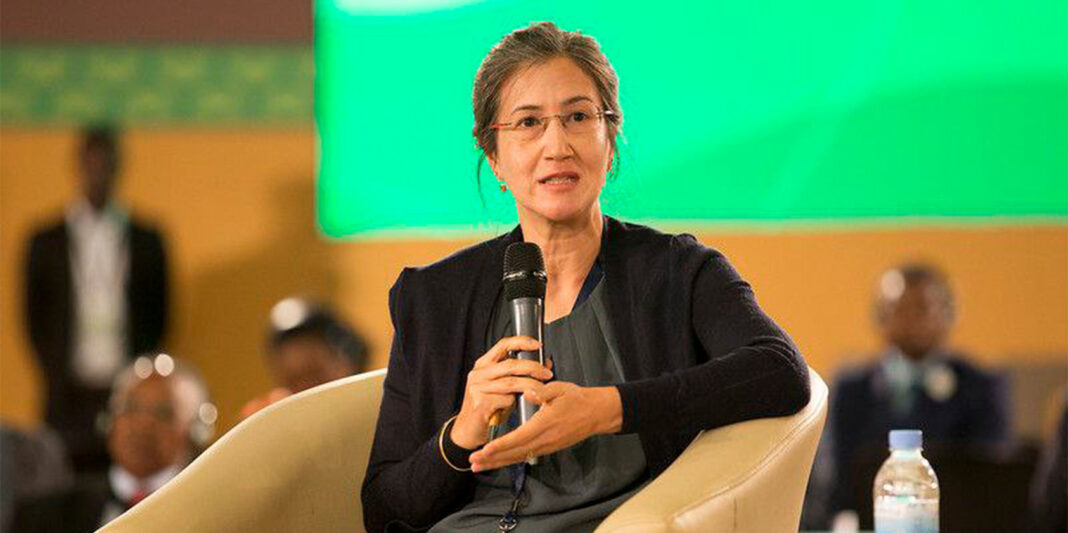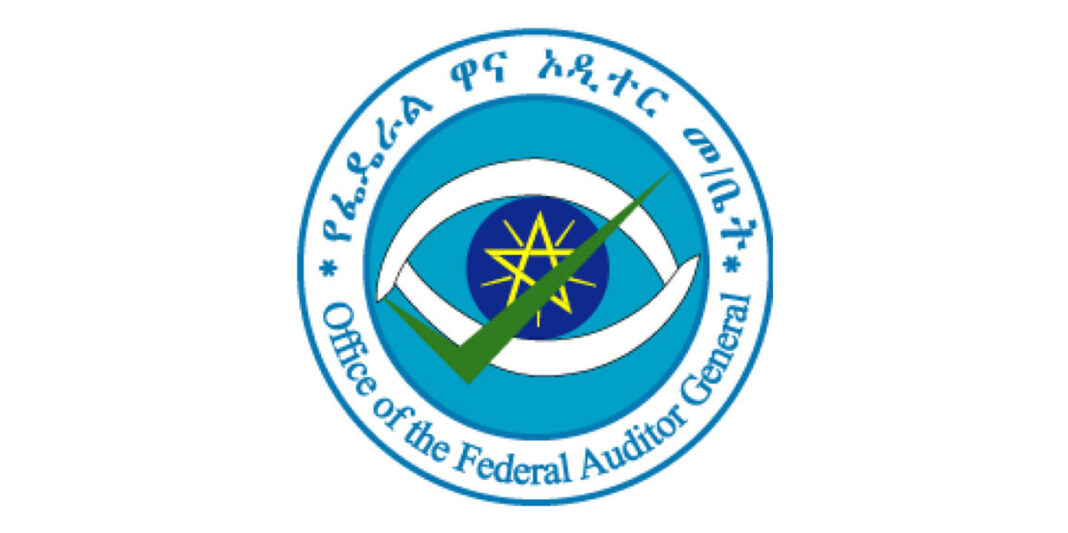In this exclusive interview, Capital sits down with Natasha Hayward, a distinguished global expert on food and nutrition security and the Program Manager of the Global Agriculture and Food Security Program (GAFSP) at the World Bank. With more than two decades of experience across Africa, South and East Asia, Natasha has led critical initiatives in agriculture, rural livelihoods, and nutrition security, with a strong focus on community-driven development and social inclusion.
Currently, Natasha is at the forefront of the Global Challenge Program for Food and Nutrition Security, steering an international effort to monitor and respond to the rapidly evolving challenges in global agri-food systems. As Program Manager for GAFSP—a multilateral partnership driving innovation and investment for sustainable agriculture in the world’s most vulnerable countries—she brings a unique perspective on leveraging public and private financing to build resilient food systems in fragile settings.
This interview give Natasha’s insights on the state of global food security, the role of public and private investment, impactful interventions for women and youth, and the specific case of Ethiopia—offering readers a closer look at how international programs are shaping the future of food and agriculture worldwide. Excerpts;
Capital: The latest SOFI report indicates that global food security is at a shocking rate, especially as inflation is disproportionately affecting poorer countries. In your view, what are the most urgent and critical factors exacerbating this serious situation?
Natasha: “Rising conflict, increasingly frequent and severe climate shocks, and inflation are converging to deepen food insecurity around the world, especially in low-income countries. Smallholders in these countries face reduced purchasing power and escalating input costs, undermining both access to and production of healthy food. Integrated approaches – emphasizing aspects such as nutrition, climate resilience, and environmental conservation – are important to addressing short-term needs, while also creating long-term stability.”
Capital: Providing financial resources for agriculture in low-income countries is defined as an increasing challenge. After all, what are the key strategies GAFSP and the World Bank use to fill this financial gap when development aid is under pressure?
Natasha: “GAFSP blends public and private financing, channeling funds through country-led plans, and crowds in co-investment where possible to maximize resourcing. Our donors have placed grant resources with the Program so that they can be deployed to contexts with high need, but also with the potential for partnership. Notably, we recently launched the Business Investment Financing Track (BIFT), which is a $75 million pilot launched October 2024, and which provides innovative blended finance to mobilize private and climate capital for smallholder farmers, MSMEs, and agrifood startups. The BIFT aims to de-risk investments by promoting public private partnerships and co-financing with GAFSP’s partner DFIs (AfDB, ADB, IFC, IFAD, IDB Invest) for at least 1:1 matched investment and 1:2 private capital investment. In so doing, we hope the BIFT strengthens local value chains, promoting climate-smart, nutritious food systems and inclusive capital market development.”
Capital: How critical is private sector involvement in solving the global food security crisis? What new models or incentives are needed to effectively drive private investment in sustainable agriculture and food systems, especially in places where you have experience, such as degraded conditions?
Natasha: I think it is worth noting that farmers are themselves private sector actors and GAFSP seeks to engage and support them, from those more dispersed smallholders, through to emerging producer organizations, enterprises and agribusiness. The private sector is essential to scale and sustain agricultural transformation – public sector financing, though critical, will not be enough to bridge the gap in investment required. However, channeling resources to the farmers and agribusinesses that can enable this transformation is difficult often because of limited physical and financial infrastructure, high perceived risk, and inadequate risk mitigation tools. GAFSP’s focused mandate, pooled resources, diverse financing toolkit, and network of development partners across the multilateral system make it uniquely positioned to address these barriers, both investing in the enabling environment and cultivating private sector investment. We have been able to demonstrate how this can work in countries where the need is greatest and the risks are high, but where we see that resources can have the most impact.”
Capital: GAFSP was started during the 2007-08 food price crisis. What do the current challenges look like compared to that time, and what lasting lessons from GAFSP’s past interventions are most relevant to today’s efforts?
Natasha: While 2007–08 was a food price crisis, today we face intersecting climate, conflict, and cost-of-living shocks, as illustrated by the SOFI report. We are also in a landscape where overseas development aid is shrinking, despite the elevated and complex needs. A key GAFSP lesson from past interventions is the compounding value of long-term investments which integrate co-benefits – addressing those cross-cutting areas which are so relevant to agriculture. Food systems transformation is a powerful accelerator for broader development goals – even more so when co-benefits are built in by design. When we integrate attention to women’s empowerment, climate resilience, and nutrition outcomes, the impact of every dollar invested multiplies.
Capital: Ethiopia is among the African countries facing severe food insecurity, exacerbated by conflict, drought and economic upheaval. What are the specific problems that GAFSP has identified in Ethiopia, and how are your programs designed to address these multi-faceted problems?
Natasha: In Ethiopia, food insecurity is driven by drought, displacement, and disrupted markets. Since 2010, GAFSP has contributed US$87 million to Ethiopia’s $843 million renewal project, AGP, which has leveraged co-financing from multiple partners and reached more than three million people across the country. GAFSP’s approach is to support country-led and -designed investments. Across Ethiopia, AGP has successfully improved smallholder productivity and market access through climate-smart irrigation, infrastructure, and extension services, boosting crop yields by up to 83% and integrating climate adaptation and nutrition-sensitive agriculture for long-term resilience. Through our private sector financing, we have also supported a company working with pastoralists in livestock production, to improve safety and quality in the supply chain for nutritious meat production.”
Capital: SOFI’s report highlights the importance of maximizing impact through the integration of food, climate, nature and nutrition. Can you provide concrete examples of how GAFSP-supported programs can implement this integrated approach in practice?
Natasha: One of the core principles of GAFSP is attention to key cross-cutting themes such as women’s empowerment, sustainability, climate resilience, and nutrition outcomes. For example, a GAFSP-funded project in Rwanda – the Rwanda Sustainable Agricultural Intensification Project (SAIP) – successfully strengthened food systems stability in the country by funding the establishment of more than 12,000 kitchen gardens across the country.
“The project, which reached almost 200,000 people, emphasized nutrition-sensitive agricultural practices, training communities on the production and consumption of nutritious foods and multiplying seeds for iron-enriched beans. In particular, the project engaged women and caregivers in home-based nutrition efforts. Integrating nutrition and gender-based objectives into this project multiplied its benefit to the local community. Recognizing the inter-woven complexities of the food system, GAFSP encourages projects which respond to the multisectoral drivers of food insecurity, and we also monitor this across our portfolio, trying to document how and where these cross-cutting aspects have been successfully addressed.”

Capital: GAFSP has supported more than 20 million farmers. Can you share the success of those who are part of the GAFSP project, which highlights the program’s tangible impact on food and nutrition security and improvement of livelihoods?
Natasha: Since it was established in 2010, GAFSP has mobilized US$2.5 billion in grants and concessional finance to countries, producer organizations, and agribusinesses for transformative investments across the agri-food system, reaching more than 20 million people, as you note. GAFSP projects are designed to reach the most vulnerable in the most hard-to-reach markets, where investment can have the biggest positive impact. For example, a GAFSP-funded project in Timor-Leste – the Sustainable Agriculture Productivity Improvement Project (SAPIP) – successfully navigated fragility, conflict, and extreme weather in the country to strengthen food security and resilience on the small island state, benefitting more than 70,000 people affected by recent conflict. Investments in climate-smart agriculture, watershed planning, and farmer training have led to increased yields, reduced post-harvest losses, and expanded market access on the island, contributing to significantly improved living standards since the project began in 2013.”
Capital: As GAFSP Program Manager, what are your strategic priorities for the program from today until 2030, taking into account the latest SOFI report and the increasing challenges?
Natasha: Looking ahead to 2030 and as reflected in the SOFI report, there is clearly an urgent need to build more resilient, sustainable, and inclusive agrifood systems in low-income countries, particularly in Africa, and GAFSP is currently setting out its objectives, strategic direction and investment priorities for 2025-2030 to respond to this. At the core of the Program’s vision is to build on GAFSP’s unique strength as a ready-to-use, proven financing platform serving the international community and helping to pool scarce donor resources. A key question for our Steering Committee, which represents our multistakeholder governing body, is how to really leverage this ready platform, in an era of more limited resources, to deploy them in a way that most maximizes their value.
“Three strategic directions will be important: maximizing co-benefits by integrating attention to climate, nature, nutrition, and the central role of women in agrifood systems; enabling countries, producers and businesses to invest more boldly in innovative solutions and approaches; and catalyzing additional resources, scaling impact with increased public, private, and climate finance.”
Capital: Youth participation in taxation in Ethiopia, especially young people in rural areas, face barriers in accessing land, resources, and financial services. How is GAFSP supporting Ethiopia’s youth to see agriculture as a sustainable and liveliable source of livelihood, moving beyond traditional farming to adopt business-driven and innovation-based approaches?
Natasha: A key focus of the AGP project in Ethiopia, which I noted earlier has been the participation of youth, who are the future of Ethiopia’s agricultural sector. GAFSP’s diverse toolkit of financing instruments allows the Program to engage with young agricultural entrepreneurs at each stage in the growth cycle of their agribusiness from start-up and building connections to local value chains all the way to seizing opportunities in global export markets. Delivering financial and technical support that is tailored to the specific needs of young agricultural entrepreneurs is fundamental for their success and that of Ethiopia’s agrifood sector in the long-term.”
Capital: Female farmers and youth face unique and increasing obstacles in agriculture. Based on your experience in Africa, South and East Asia, what are the most effective interventions to enhance the rights of these groups, ensure their access to resources, knowledge, and markets?
Natasha: Women are central to agrifood systems, yet they face systemic barriers, including limited land rights, access to high-quality inputs, finance, markets, and training. These constraints contribute to a 24 per cent productivity gap between male- and female-managed farms in low-income countries. Youth, similarly, often lack access to land, capital, and support networks, making it difficult to see agriculture as a viable future.
GAFSP recognizes that empowering women and youth is not only a matter of equity, but a critical driver of food security and economic resilience. Our projects conduct gender gap analyses at the design stage, target finance to women and youth-led cooperatives, and promote leadership of producer organizations through capacity building. In Mauritania, for example, we support over 300 women’s cooperatives with land access, market platforms, and climate-smart training. In The Gambia, through the Agriculture and Food Security Project, more than half of the 18,000 smallholder farmers participating in the project are women, directly linking productivity gains to school feeding and nutrition outcomes.
“By embedding inclusive approaches into all aspects of our programming, GAFSP is helping to unlock the full potential of women and youth to lead sustainable transformation in food systems. This helps to enhance livelihoods, improve nutrition, and, importantly, build long-term community resilience.”
Capital: The World Bank is implementing projects in Ethiopia such as the Food Security Resilience Project and the Food Security Rural Livelihoods Program. Can you explain how these larger World Bank initiatives are working in conjunction with GAFSP’s targeted support to enhance the overall resilience of the food system in Ethiopia?
Natasha: GAFSP takes its lead from country governments, supporting national priorities in agriculture and food systems. In Ethiopia, our support complements broader initiatives like the World Bank’s Food Security Resilience Project by filling targeted gaps. Typically, we work through the country’s agriculture sector coordination group to ensure that GAFSP proposals align with other development partners and add value where it’s most needed.
Capital: What are the consequences of the ongoing macroeconomic changes in Ethiopia for food security? How are these changes affecting food prices, access to money, and agricultural production in the country?
Natasha: GAFSP’s global focus means that we defer to national and local actors to complete in-country assessments of macroeconomic impacts. While we are not best placed to comment on current conditions in Ethiopia specifically, we know that macroeconomic pressures such as inflation and currency shifts can worsen food insecurity. GAFSP’s support focuses on fighting back against pressures like these on food systems security by both addressing immediate needs and building long-term resilience through improvements to productivity, market access, and climate adaptation.







